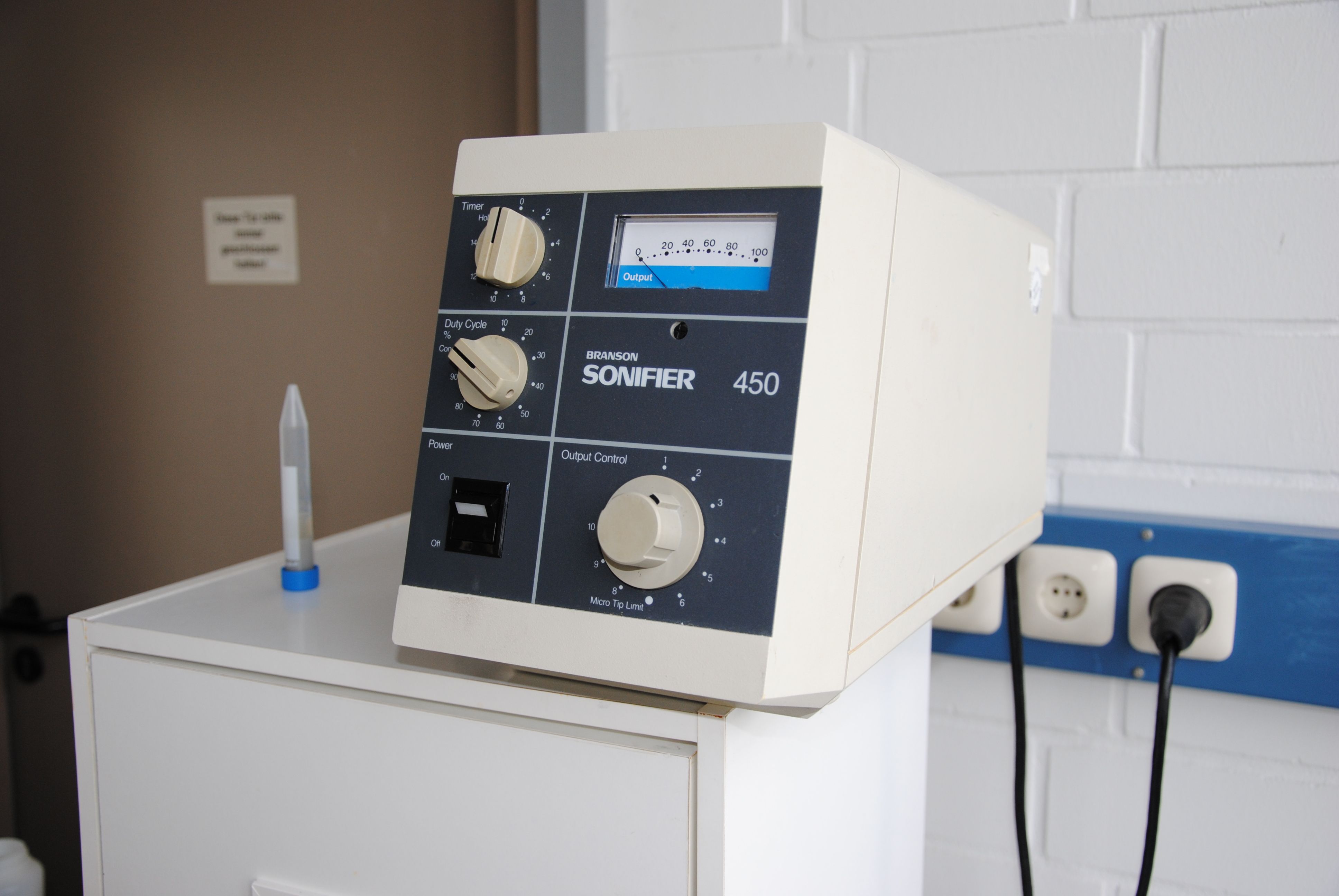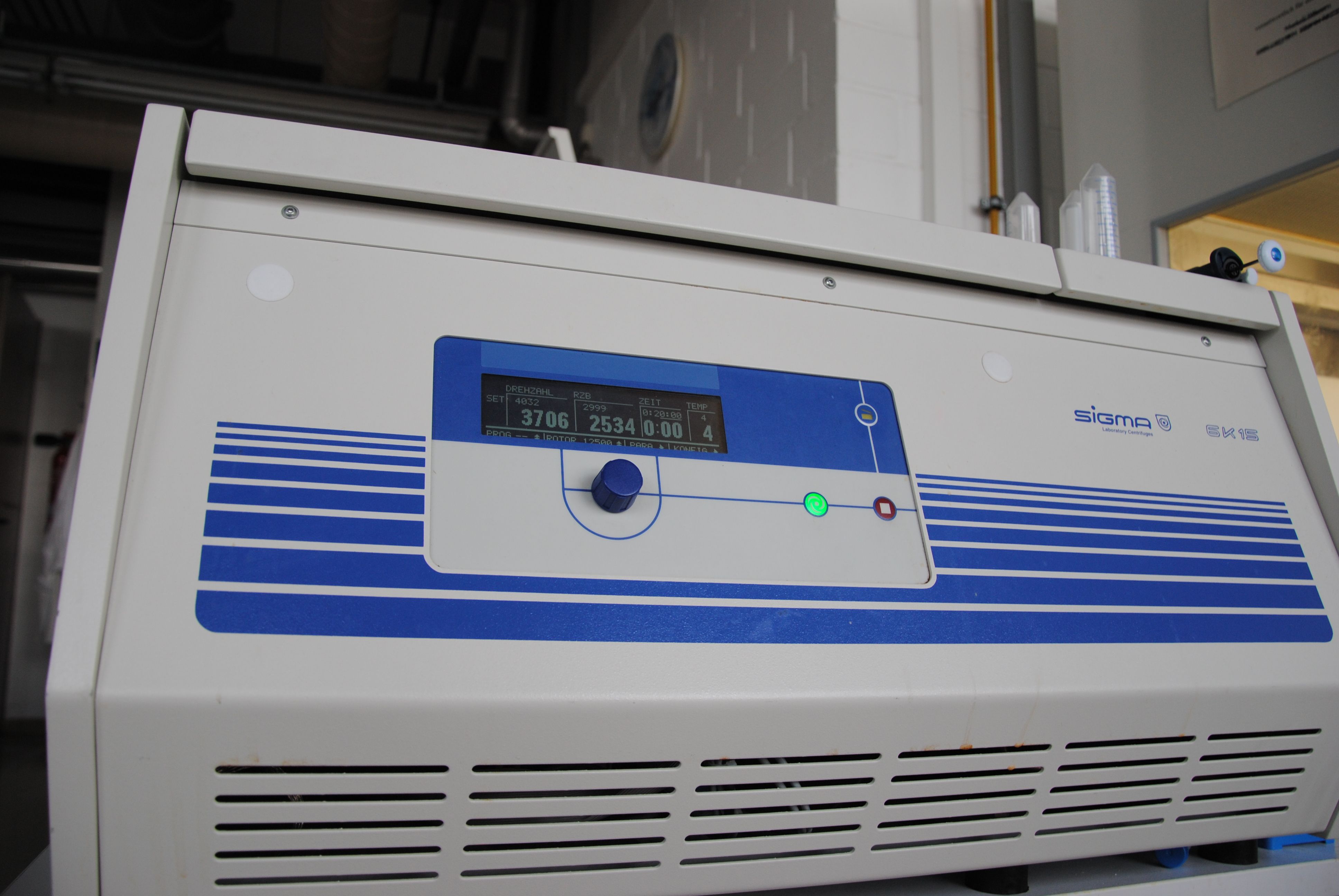Team:Bielefeld-Germany/Results/S-Layer/Guide/4a
From 2011.igem.org
(Created page with "{{Bielefeld_2011_Header}} =Small scale cell disruption= [[Image:IGEM-Bielefeld2011-Sonifier.JPG|400px|thumb|center|A Branson Sonifier 450 which we used to disrupt our cells in ...") |
|||
| Line 3: | Line 3: | ||
=Small scale cell disruption= | =Small scale cell disruption= | ||
| - | [[Image:IGEM-Bielefeld2011-Sonifier.JPG|400px|thumb| | + | [[Image:IGEM-Bielefeld2011-Sonifier.JPG|400px|thumb|left|A Branson Sonifier 450 which we used to disrupt our cells in small scale.]] [[Image:IGEM-Bielefeld2011-Centrifuge.JPG|400px|thumb|left|A Sigma 6K15 centrifuge which we used in our project.]] |
| + | |||
| + | The S-layer fusion proteins form inclusion bodies in the ''E. coli'' cells (at least most of them). Inclusion bodies have the advantage that they are relatively easy to clean-up and are resistant to proteases. But inclusion bodies are unsoluble so they have to be solubilized by urea or guanidin hydrochloride. In addition, these chemicals suppress the self-assembly ability of the S-layer proteins which leeds to monomeric S-layer proteins. The cell disruption is carried out in a buffer containing 6 M urea, 50 mM Tris-HCl .... The cells are lyzed by sonification (5 times 2 minutes on ice, max. 20 W, cooling on ice between these steps). Afterwards the lysate is incubated for 1 h at 4 °C on a shaker or vertical rotator to solubilize the inclusion bodies. The cell debris is remove by centrifugation and the supernatant is used for further purification. | ||
Revision as of 20:58, 27 October 2011

Small scale cell disruption
The S-layer fusion proteins form inclusion bodies in the E. coli cells (at least most of them). Inclusion bodies have the advantage that they are relatively easy to clean-up and are resistant to proteases. But inclusion bodies are unsoluble so they have to be solubilized by urea or guanidin hydrochloride. In addition, these chemicals suppress the self-assembly ability of the S-layer proteins which leeds to monomeric S-layer proteins. The cell disruption is carried out in a buffer containing 6 M urea, 50 mM Tris-HCl .... The cells are lyzed by sonification (5 times 2 minutes on ice, max. 20 W, cooling on ice between these steps). Afterwards the lysate is incubated for 1 h at 4 °C on a shaker or vertical rotator to solubilize the inclusion bodies. The cell debris is remove by centrifugation and the supernatant is used for further purification.
 "
"


